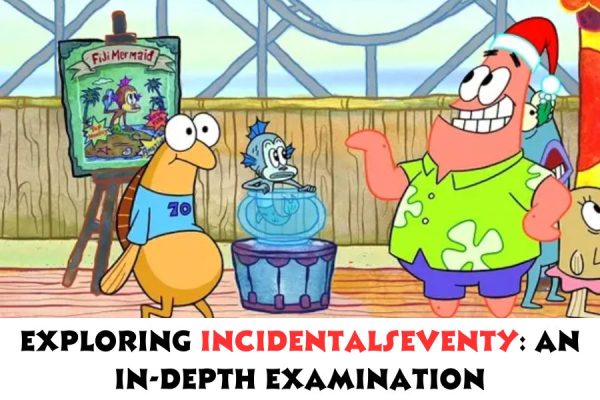What is Magic Mushrooms
Magic mushrooms, or shrooms or mushies, are fungi containing psychoactive compounds like psilocybin and psilocin. These substances induce hallucinations similar to LSD when consumed in sufficient quantities.
How long does it take for Magic Mushrooms to kick in?
It typically takes around 20 to 40 minutes to take effect after ingestion. During this time, psilocybin, the active compound in mushrooms, is metabolized into psilocin, which interacts with serotonin receptors in the brain.

The peak effects of shrooms are usually experienced about 90 minutes to two hours after ingestion, with the majority of effects occurring within the first six hours. As psilocin enters the bloodstream and is processed by the kidneys, the effects gradually wear off over 6 to 12 hours. However, some individuals may continue to feel residual effects until they sleep, often experiencing a positive “glow” the following day.
Types of Magic Mushrooms?
There are several types of magic mushrooms, each containing varying levels of psychoactive compounds like psilocybin and psilocin. Here are some common varieties:
- Psilocybe cubensis: Widely distributed and recognizable by its convex cap that flattens with maturity, often found in tropical regions.
- Psilocybe semilanceata (Liberty Cap): A small, cone-shaped mushroom found in grassy areas known for its potent effects.
- Psilocybe cyanescens (Wavy Cap): Characterized by its wavy cap and strong psychoactive properties, commonly found in wood-chip mulch.
- Psilocybe azurescens: Noted for its high psilocybin content and large, caramel-colored caps, often found in coastal regions.
- Psilocybe baeocystis (Knobby Tops): Recognizable by its dark, conical cap and swollen stem base, often found in wood-chip beds.
- Psilocybe tampanensis: Known for its truffle-like appearance containing psychoactive compounds, sometimes called the philosopher’s stone.
- Psilocybe mexicana: Associated with indigenous cultures in Mexico, used in religious and shamanic ceremonies.
- Psilocybe weilii: Found in the southeastern United States, known for its potent effects and often found in grassy areas.
Identifying magic mushrooms in the wild can be challenging, and consuming misidentified species can be dangerous. It’s advisable to source magic mushrooms from reliable sources to ensure proper identification and safety.
What does it look like?
When it comes to identifying magic mushrooms, caution is key as many poisonous varieties closely resemble them, posing serious health risks to foragers. In the UK, the two most common types of magic mushrooms are liberty caps (Psilocybe semilanceata) and fly agaric (Amanita muscaria).
Liberty caps are small mushrooms with a tan hue, while fly agarics are characterized by their red and white spotted appearance, reminiscent of classic toadstools. It’s worth noting that the potency of magic mushrooms can vary, with some species, like fly agarics, typically being stronger than others, such as liberty caps.
For those seeking an alternative to ingesting whole mushrooms, liquid psilocybin offers another option. This clearish, pale brown liquid is derived from extracting psilocybin, the active psychedelic compound found in mushrooms like liberty caps, and is commonly contained in small vials.
What does it taste like?
As for taste and smell, liberty caps are known for their earthy flavor and rubbery texture, making them quite chewy when consumed raw. Unlike the familiar culinary mushrooms, they possess a distinct taste that some find challenging. To mask the flavor, individuals may incorporate them into dishes like omelets or brew them into tea.
How does it make you feel?
The potency of magic mushrooms can vary widely depending on factors such as freshness, season, and growing conditions, making it challenging to predict their strength accurately.
When individuals consume mushrooms, they often experience a distorted perception of the world, with colors, sounds, and objects appearing vastly different. Some may also encounter mild hallucinations, referred to as “visuals.”
Effects of magic mushrooms
The effects of magic mushrooms can evoke a range of emotions, from feelings of euphoria, giggliness, and awe to sensations of heightened energy and excitement. However, they can also induce negative experiences such as paranoia, anxiety, panic, feeling overwhelmed, or nausea.
The individual’s experience is influenced by various factors including dosage, surroundings, company, comfort level, and mood. For instance, consuming magic mushrooms while in a negative mood or experiencing stress or depression may exacerbate these feelings.
It’s essential to consider these variables and approach magic mushroom use with caution, ensuring a comfortable and positive environment to mitigate the risk of adverse reactions.
How does it make people behave?
The effects of magic mushrooms vary depending on the dosage consumed. In cases of small doses, individuals may not exhibit noticeable signs of being under the influence.
However, larger doses can lead to unpredictable behavior. People may display excessive laughter, fixation on specific subjects, heightened emotional responses, or feelings of paranoia.
Can magic mushrooms become addictive like other drugs?
Although not commonly associated with addiction comparable to substances such as opioids or alcohol, some individuals may develop a desire to repeatedly use magic mushrooms due to the impact on their mental state.
Risks of using Magic Mushrooms?
Physical health risks
The primary health risk associated with consuming magic mushrooms is inadvertently ingesting a poisonous variety. In the UK, there exists a variety of mushrooms, including lethal ones like the fly agaric.
If one mistakenly consumes a poisonous mushroom, symptoms typically manifest swiftly, necessitating urgent medical attention. It’s crucial to retain a sample of the mushroom ingested for identification purposes by healthcare professionals.
Consuming magic mushrooms may result in adverse effects such as dizziness, nausea, diarrhea, and stomach pains. These symptoms highlight the importance of being cautious and informed when foraging for or consuming mushrooms.
Mental health risks
Individuals with existing mental health conditions may experience exacerbation of symptoms when consuming magic mushrooms.
Ingesting magic mushrooms can precipitate a negative trip, characterized by frightening and unsettling experiences, which may intensify preexisting mental health issues.
Furthermore, users may encounter flashbacks, and recurring frightening or unsettling episodes, even after the effects of the drug have worn off.
In severe cases, consuming magic mushrooms can lead to a loss of complete control over one’s actions, posing significant risks and potentially endangering the individual. These factors underscore the importance of cautious and informed decision-making regarding magic mushroom use, particularly for individuals with preexisting mental health concerns.
Can Magic Mushroom Use Be Tested?
Specialized urine drug tests and saliva tests are available to detect recent consumption of psychedelic mushrooms.
Driving Under the Influence of Magic Mushrooms: Is it Dangerous?
Driving under the influence of any substance, including psychedelic drugs like magic mushrooms, poses significant risks and is highly dangerous.
Magic Truffles vs Mushrooms: Exploring the Differences
Magic truffles and mushrooms share a common psychedelic compound called psilocybin, which induces their effects. However, they exhibit disparities in appearance and taste. Truffles, also known as sclerotia, grow underground, while conventional mushrooms thrive above ground.
Although this variance impacts their cultivation and availability, it doesn’t significantly alter their psychoactive properties.
Truffles typically boast a milder flavor profile compared to regular mushrooms, rendering them more appealing to certain users. Additionally, environmental factors affecting growth conditions may lead to differences in chemical composition between truffles and mushrooms.
These distinctions can result in slightly divergent experiences for individuals consuming truffles versus traditional mushrooms.
How Are “Magic” Mushrooms Used?
People typically ingest magic mushrooms either fresh or dried. They may eat them directly, mix them with food to mask their bitter taste or brew them into a tea for consumption.
What Do “Magic” Mushrooms Do?
Upon ingestion, the effects of magic mushrooms usually manifest within 30 to 45 minutes and can last up to 6 hours. Initial reactions often include nausea and yawning, followed by the onset of the “trip.”
The intensity and duration of a trip vary depending on factors such as the potency and quantity of mushrooms consumed, as well as the user’s mood, personality, and expectations. While some experiences may be mild and relaxing, others can induce anxiety, paranoia, and distorted perceptions of time and reality.
Here are the main points to remember about the effects and duration of magic mushrooms:
- Onset Time: Shrooms typically begin to take effect within 20 to 40 minutes of ingestion, but this can vary based on factors like metabolism, the specific type of mushroom, and whether they’re consumed on an empty stomach.
- Magic Mushroom Tea: Drinking magic mushroom tea can lead to faster onset of effects, often within 10 to 15 minutes, as liquids are absorbed more rapidly by the body.
- Lemon Tek Method: The Lemon Tek method is a technique that accelerates the onset and intensifies the effects of shrooms. It involves soaking the mushrooms in lemon juice before consumption.
- Duration: The effects of magic mushrooms typically last for around 4 to 6 hours, with peak effects occurring approximately 1 to 2 hours after ingestion.
- Dosage: It’s crucial to exercise caution when determining the appropriate dosage of shrooms, especially when trying new consumption methods or different mushroom varieties. Starting with a small dose can help ensure a safe and enjoyable experience.
By being mindful of these factors and starting with a cautious approach, individuals can enhance the safety and enjoyment of their magic mushroom experiences.
Learn more about different types of mushrooms Mushrooms: FAQs And Types Explained
Physical effects of magic Mushrooms
Physical effects may include increased heart rate, blood pressure, and body temperature, as well as muscle weakness, drowsiness, and dilated pupils. In rare cases, excessive consumption of mushrooms can lead to severe side effects, including death.
Users may also experience flashbacks, where they re-experience aspects of a previous trip, either shortly after ingestion or months later. Additionally, consuming magic mushrooms poses risks of stomach discomfort, diarrhea, and impaired judgment, making driving while under the influence unsafe.
Due to the variability in potency and the presence of poisonous mushroom species, purchasing magic mushrooms carries inherent risks. Therefore, caution should be exercised when consuming them to minimize potential harm.
Long-term effects
Long-term use of magic mushrooms can potentially lead to the experience of flashbacks, where a negative trip resurfaces even when the individual is not actively using the drug. Additionally, combining mushrooms with other substances like alcohol or other drugs can escalate the risk of encountering various health complications.
The phenomenon of flashbacks involves the recurrence of unsettling experiences from previous mushroom trips, even after the effects of the drug have worn off. This can occur unexpectedly and may persist for an extended period, impacting an individual’s mental well-being.
Furthermore, mixing magic mushrooms with alcohol or other drugs can exacerbate health risks, amplifying the potential for adverse reactions and complications. The interaction between substances can intensify the effects on the body and mind, heightening the likelihood of negative outcomes.
Therefore, it’s crucial to be mindful of the potential long-term repercussions of magic mushroom use, including the possibility of flashbacks, and to avoid combining them with other substances to mitigate health risks.
Tolerance and dependence
Regular use of magic mushrooms can lead to the development of tolerance in as little as 3 to 4 consecutive days. This means that individuals may need to consume increasingly larger doses over time to achieve the same effects they initially experienced.
Continued use of magic mushrooms over several consecutive days can result in the development of complete tolerance, rendering subsequent doses ineffective in producing the desired effects.
Moreover, frequent and prolonged use of magic mushrooms can contribute to the risk of psychological dependence, where individuals may rely on the drug to recreate specific emotional or mental states. This dependence can lead to a cycle of repeated use, potentially impacting overall mental well-being and functioning.
It’s essential to be aware of the potential for tolerance and dependence associated with regular magic mushroom use, as these factors can influence both the effectiveness of the drug and an individual’s overall psychological health.
Bad trip of Magic Mushrooms
In the event of a distressing experience, often termed a “bad trip,” caused by the effects of magic mushrooms, it’s important to offer support and reassurance in a calm environment. If someone is struggling with a bad trip, guiding them to a quiet area and providing calm reassurance can help alleviate their distress.
In cases of severe distress or if there are concerns about someone’s safety, it’s appropriate to seek professional assistance. Calling emergency services at 911 or contacting the Poison and Drug Information Service at 1-800-332-1414 can provide valuable guidance and support in managing the situation effectively.
For individuals seeking assistance or information regarding magic mushroom use or substance abuse in general, the Addiction and Mental Health Helpline offers confidential support and guidance. This helpline, accessible 24/7 at 1-866-332-2322 (specific to Alberta), provides a safe space for individuals to discuss their concerns and access resources for assistance.
Stay connected for the latest news and updates on Discovergossips.com




